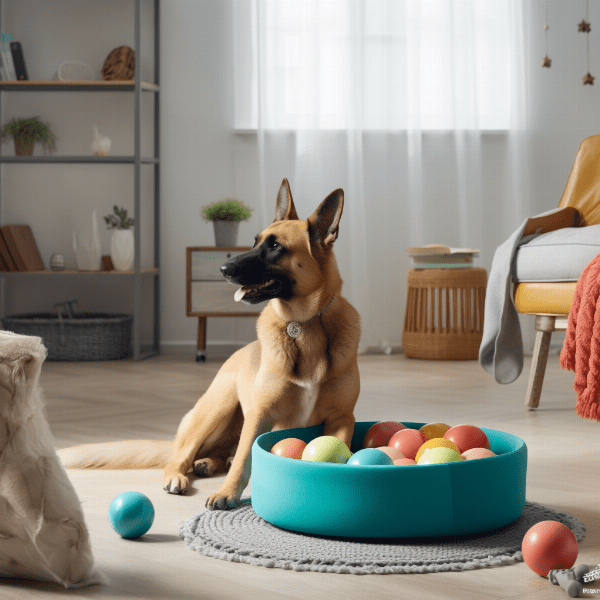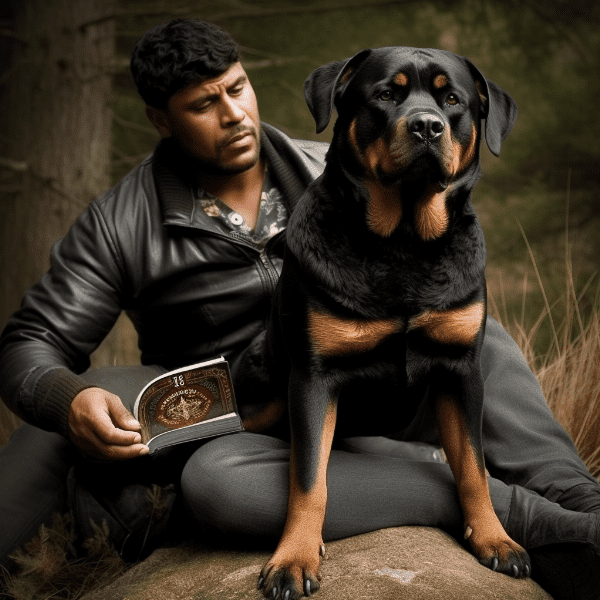Table of Contents
- Understanding Dog Growling
- Medical Reasons for Growling
- Fear and Anxiety as Triggers
- Territorial and Possessive Behavior
- Lack of Socialization and Training
- Pain and Discomfort as Factors
- Identifying the Root Cause of Growling
- Managing and Preventing Growling
- Seeking Professional Help
- Maintaining a Safe Environment for Your Dog
Understanding Dog Growling
Dogs use growling as a form of communication, and it’s essential to understand what it means when your dog growls. Growling is a warning sign that your dog feels uncomfortable, threatened, or stressed. It’s your dog’s way of saying, “back off” or “leave me alone.”
Growling vs. Aggression
It’s important to note that growling doesn’t always mean aggression. Growling is a dog’s way of expressing itself, and it’s a warning sign that your dog is uncomfortable. Aggression is a more severe response that typically follows when the dog’s warning signs are ignored. A dog that’s growling may not necessarily attack, but it’s crucial to take the growling seriously and address the underlying issue.
The Different Types of Growling
Growling can be of different types and can indicate different things. For example, a low-pitched growl might mean your dog is afraid or feels threatened, while a high-pitched growl might mean your dog is excited or happy. Understanding the different types of growling and their meanings can help you communicate better with your furry friend.
Body Language
Dogs communicate a lot through body language, and understanding it can help you interpret your dog’s growling. Pay attention to your dog’s ears, tail, posture, and eyes to gauge their emotional state. A dog that’s growling might have a stiff body, raised hackles, and dilated pupils. Understanding your dog’s body language can help you determine what’s causing their discomfort and address the issue accordingly.
Conclusion
In conclusion, understanding Dog growling is crucial for any dog owner. It’s a warning sign that your dog is uncomfortable, threatened, or stressed, and it’s your responsibility to address the underlying issue. By paying attention to your dog’s body language, you can determine what’s causing the growling and address it effectively. Remember, growling is a form of communication, and it’s your job to listen to your furry friend and provide them with a safe and comfortable environment.

Medical Reasons for Growling
Sometimes, growling can be a symptom of an underlying medical condition. If your dog suddenly starts growling for no apparent reason, it’s crucial to rule out any medical issues that might be causing the behavior. Here are some medical reasons why your dog might be growling.
Pain and Discomfort
If your dog is in pain or discomfort, they might growl to communicate their discomfort. Dogs can’t tell us where it hurts, so growling might be their way of saying, “I’m hurting.” Pain can be caused by a variety of issues, including arthritis, injury, or infection. If your dog’s growling is accompanied by other signs of pain, such as limping or whining, it’s essential to take them to the vet.
Hormonal Imbalances
Hormonal imbalances, such as thyroid imbalances or adrenal gland issues, can also cause behavioral changes in dogs. These imbalances can cause a dog to become more aggressive or irritable, which can result in growling. If you suspect that your dog’s growling might be caused by a hormonal imbalance, it’s crucial to take them to the vet for a proper diagnosis and treatment.
Conclusion
In conclusion, growling can be caused by a variety of medical issues, and it’s crucial to rule out any underlying medical conditions that might be causing the behavior. Pain and discomfort, neurological disorders, and hormonal imbalances are just some of the medical issues that can cause growling in dogs. If you suspect that your dog’s growling might be caused by a medical condition, it’s essential to take them to the vet for a proper diagnosis and treatment. Remember, a happy and healthy dog is a well-behaved dog.

Fear and Anxiety as Triggers
Fear and anxiety are common triggers for growling in dogs. When dogs feel afraid or anxious, they might growl as a way of communicating their discomfort. Here are some of the reasons why fear and anxiety can cause growling in dogs.
Past Trauma or Negative Experiences
Dogs that have had negative experiences in the past, such as abuse or neglect, are more likely to develop fear and anxiety. These negative experiences can cause dogs to be more reactive and aggressive, which can result in growling. It’s crucial to be patient with these dogs and provide them with a safe and comfortable environment.
Separation Anxiety
Separation anxiety is a common type of anxiety that affects many dogs. Dogs with separation anxiety become anxious when left alone, and this can result in destructive behavior, including growling. If your dog exhibits signs of separation anxiety, such as excessive barking or destructive behavior, it’s essential to address the issue and provide them with proper training and care.
Conclusion
In conclusion, fear and anxiety are common triggers for growling in dogs. Past trauma or negative experiences, lack of socialization, and separation anxiety are just some of the reasons why dogs might become fearful and anxious. It’s crucial to address these issues and provide your dog with the proper care and training to help them feel safe and comfortable. Remember, a happy and relaxed dog is a well-behaved dog.
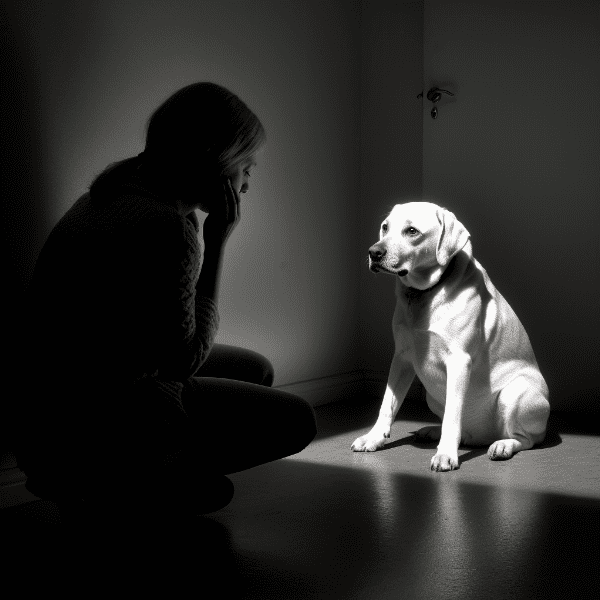
Territorial and Possessive Behavior
Territorial and possessive behavior can also be triggers for growling in dogs. Dogs are naturally territorial and might growl to protect their territory or possessions. Here are some of the reasons why territorial and possessive behavior can cause growling in dogs.
Resource Guarding
Dogs that exhibit resource guarding behavior might growl to protect their food, toys, or other possessions. Resource guarding is a natural behavior, but it can become a problem if it’s excessive or aggressive. It’s crucial to address resource guarding behavior early and provide your dog with proper training.
Protection of Territory
Dogs might growl to protect their territory, such as their home or yard. Dogs that are territorial might view strangers or other dogs as a threat and become aggressive. It’s crucial to socialize your dog properly and provide them with the training they need to feel comfortable in different situations.
Fear of Loss
Dogs might also growl if they’re afraid of losing something, such as their owner’s attention or affection. Dogs that are afraid of losing something might become possessive and display aggressive behavior. It’s important to provide your dog with the attention and affection they need and ensure that they feel secure in their environment.
Conclusion
In conclusion, territorial and possessive behavior can be triggers for growling in dogs. Resource guarding, protection of territory, and fear of loss are just some of the reasons why dogs might become possessive and display aggressive behavior. It’s essential to provide your dog with proper training and socialization to help them feel secure in their environment. Remember, a well-trained and well-socialized dog is a happy and well-behaved dog.

Lack of Socialization and Training
A lack of socialization and training can also be a trigger for growling in dogs. Dogs that haven’t been adequately socialized or trained might become anxious or fearful in new situations, which can result in growling. Here are some of the reasons why a lack of socialization and training can cause growling in dogs.
Fear and Anxiety
Dogs that haven’t been adequately socialized might become fearful or anxious in new situations, which can result in growling. Socialization is the process of exposing your dog to new people, animals, and environments, and it’s crucial for their development. A lack of socialization can cause dogs to become fearful and anxious, which can result in growling.
Inadequate Training
Dogs that haven’t been adequately trained might become frustrated or stressed in certain situations, which can result in growling. Training is crucial for teaching your dog how to behave appropriately in different situations. A lack of training can cause dogs to become confused and stressed, which can result in growling.
Lack of Positive Experiences
Dogs that haven’t had enough positive experiences might become anxious or fearful in new situations. Positive experiences, such as playtime and affection, can help dogs feel secure and confident. A lack of positive experiences can cause dogs to become anxious or fearful, which can result in growling.
Conclusion
In conclusion, a lack of socialization and training can be a trigger for growling in dogs. Fear and anxiety, inadequate training, and a lack of positive experiences are just some of the reasons why dogs might become anxious or fearful in new situations. It’s crucial to provide your dog with proper socialization and training to help them feel comfortable and confident in different situations. Remember, a well-socialized and well-trained dog is a happy and well-behaved dog.

Pain and Discomfort as Factors
Pain and discomfort can also be factors that cause dogs to growl. Dogs that are in pain might growl to communicate their discomfort, while dogs that are uncomfortable might growl to warn others to back off. Here are some of the reasons why pain and discomfort can cause growling in dogs.
Injury or Illness
Injury or illness can cause dogs to be in pain or discomfort, which can result in growling. Dogs might growl as a way of communicating their discomfort, and it’s essential to take their growling seriously. If your dog’s growling is accompanied by other signs of pain, such as limping or whining, it’s crucial to take them to the vet.
Arthritis
Arthritis is a common condition in dogs, and it can cause them to be in pain and discomfort. Dogs with arthritis might growl when they’re touched in certain areas or when they’re asked to move in a particular way. It’s crucial to provide your dog with the proper care and treatment for their arthritis to help them feel more comfortable.
Dental Issues
Dental issues, such as gum disease or tooth decay, can cause dogs to be in pain or discomfort, which can result in growling. Dogs with dental issues might growl when they’re eating or when their mouth is touched. It’s essential to provide your dog with proper dental care and treatment to help them feel more comfortable.
Conclusion
In conclusion, pain and discomfort can be factors that cause dogs to growl. Injury or illness, arthritis, and dental issues are just some of the reasons why dogs might be in pain or discomfort. It’s crucial to take your dog’s growling seriously and address the underlying issue. By providing your dog with the proper care and treatment, you can help them feel more comfortable and reduce their growling behavior. Remember, a healthy and comfortable dog is a happy and well-behaved dog.
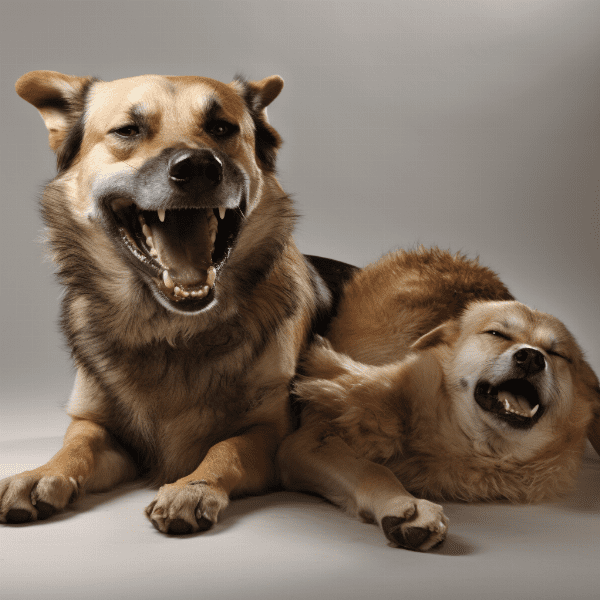
Identifying the Root Cause of Growling
Identifying the root cause of your dog’s growling behavior is essential for addressing the issue effectively. By understanding what’s causing your dog to growl, you can provide them with the proper care and training to help them feel more comfortable and reduce their growling behavior. Here are some steps you can take to identify the root cause of your dog’s growling.
Observe Your Dog’s Behavior
Observing your dog’s behavior can help you identify what’s causing their growling. Pay attention to when your dog growls and what’s happening around them. Is there a specific trigger that’s causing their growling, such as a particular person or situation? Understanding the trigger can help you address the underlying issue.
Rule Out Medical Issues
As we’ve discussed, medical issues can be a cause of growling in dogs. If your dog’s growling behavior is sudden or severe, it’s crucial to take them to the vet to rule out any underlying medical conditions. Once medical issues have been ruled out, you can focus on addressing any behavioral issues that might be causing the growling.
Consider Environmental Factors
Environmental factors can also be a cause of growling in dogs. Is your dog getting enough exercise and mental stimulation? Are they in a comfortable and safe environment? Ensuring that your dog has a comfortable and secure environment can help reduce their stress levels and reduce growling behavior.
Conclusion
In conclusion, identifying the root cause of your dog’s growling behavior is crucial for addressing the issue effectively. By observing your dog’s behavior, ruling out medical issues, considering environmental factors, and seeking professional help, you can provide your dog with the proper care and training to help them feel more comfortable and reduce their growling behavior. Remember, a well-cared-for and well-trained dog is a happy and well-behaved dog.
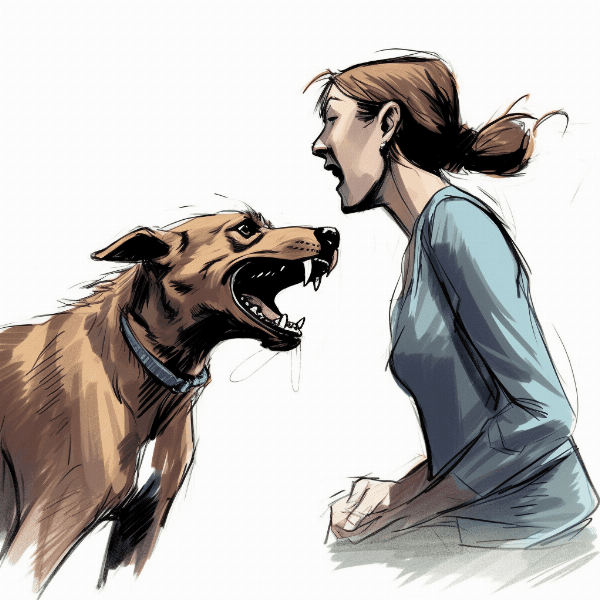
Managing and Preventing Growling
Managing and preventing growling behavior in dogs is essential for ensuring a safe and happy environment for both your dog and those around them. Here are some tips for managing and preventing growling behavior in your dog.
Address the Underlying Issue
As we’ve discussed, growling can be caused by a variety of factors, including medical issues, fear and anxiety, and territorial behavior. Addressing the underlying issue is crucial for managing and preventing growling behavior. By understanding what’s causing your dog to growl, you can provide them with the proper care and training to help reduce their growling behavior.
Proper Training
Proper training is essential for managing and preventing growling behavior in dogs. Training can help teach your dog appropriate behaviors and help them feel more comfortable in different situations. Positive reinforcement training is a great way to train your dog without causing fear or anxiety.
Socialization
Socialization is the process of exposing your dog to new people, animals, and environments. Proper socialization can help reduce fear and anxiety in dogs and help them feel more comfortable in different situations. It’s crucial to start socializing your dog at a young age and provide them with positive experiences.
Avoid Punishment
Punishing your dog for growling can make the behavior worse and cause fear and anxiety. It’s essential to avoid punishment and instead focus on providing your dog with the proper care and training they need.
Conclusion
In conclusion, managing and preventing growling behavior in dogs is essential for ensuring a safe and happy environment for both your dog and those around them. Addressing the underlying issue, proper training, socialization, and avoiding punishment are just some of the ways you can manage and prevent growling behavior in your dog. By providing your dog with the proper care and training, you can help reduce their growling behavior and ensure they feel comfortable and secure in different situations. Remember, a well-trained and well-socialized dog is a happy and well-behaved dog.

Seeking Professional Help
If your dog’s growling behavior is severe or persistent, it’s essential to seek professional help. A professional dog trainer or behaviorist can help you address the underlying issue and provide you with the proper training and care to help your dog feel more comfortable and reduce their growling behavior. Here are some reasons why seeking professional help is crucial for managing your dog’s growling behavior.
Professional Expertise
Professional dog trainers and behaviorists have the expertise and knowledge to identify the underlying issue and provide you with the proper training and care for your dog. They can help you develop a plan to manage and prevent growling behavior, and they can provide you with the support you need to succeed.
Tailored Solutions
Every dog is different, and a one-size-fits-all approach to training might not be effective. Professional dog trainers and behaviorists can develop tailored solutions for your dog’s specific needs and behavior, ensuring the best possible outcome.
Additional Resources
Professional dog trainers and behaviorists have access to additional resources, such as training tools and equipment, that can help you manage and prevent growling behavior. They can also provide you with ongoing support and guidance to ensure long-term success.
Conclusion
In conclusion, seeking professional help is crucial for managing your dog’s growling behavior. Professional dog trainers and behaviorists have the expertise and knowledge to identify the underlying issue and provide you with the proper training and care for your dog. They can provide tailored solutions, additional resources, and ongoing support to ensure long-term success. Remember, a well-cared-for and well-trained dog is a happy and well-behaved dog.
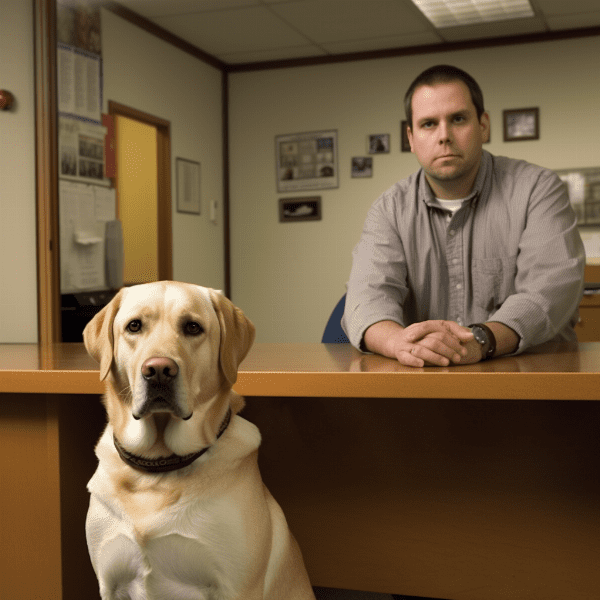
Maintaining a Safe Environment for Your Dog
Maintaining a safe environment for your dog is crucial for ensuring their well-being and preventing growling behavior. Here are some tips for maintaining a safe environment for your dog.
Supervision
Supervision is essential for keeping your dog safe and preventing unwanted behavior, such as growling. It’s important to supervise your dog when they’re around other people and animals and provide them with a safe and secure environment.
Proper Exercise and Stimulation
Proper exercise and mental stimulation are essential for keeping your dog happy and healthy. Dogs that don’t get enough exercise or stimulation might become bored and frustrated, which can lead to unwanted behavior, such as growling. Providing your dog with regular exercise and mental stimulation can help prevent growling behavior.
Secure Fencing
If you have a yard, it’s crucial to ensure that the fencing is secure and that your dog can’t escape. Dogs that are allowed to roam freely might become territorial and aggressive towards other people and animals.
Education
Education is essential for preventing growling behavior. It’s important to educate yourself on proper dog care and behavior, including training, socialization, and health care. By understanding your dog’s needs, you can provide them with the proper care and training to prevent growling behavior.
Conclusion
In conclusion, maintaining a safe environment for your dog is crucial for ensuring their well-being and preventing growling behavior. Supervision, proper exercise and stimulation, secure fencing, and education are just some of the ways you can maintain a safe environment for your dog. By providing your dog with the proper care and training, you can help prevent growling behavior and ensure they feel comfortable and secure in their environment. Remember, a well-cared-for and well-trained dog is a happy and well-behaved dog.
